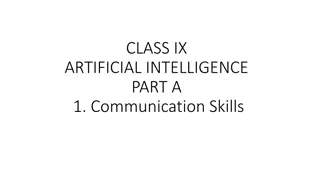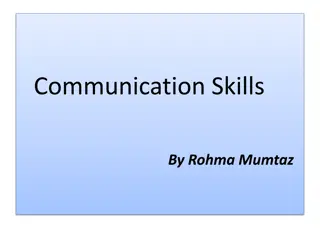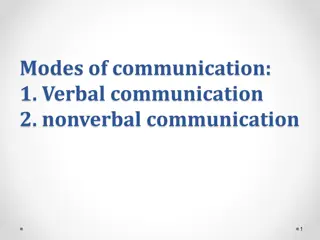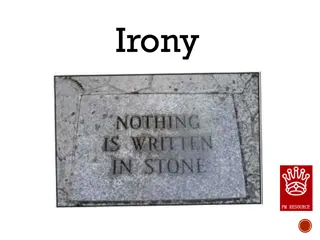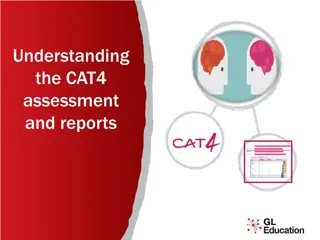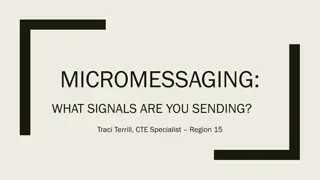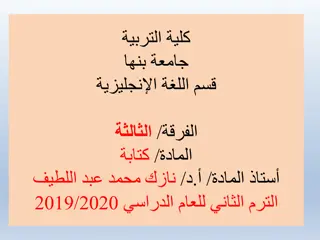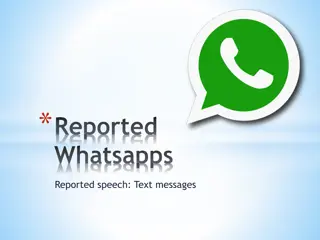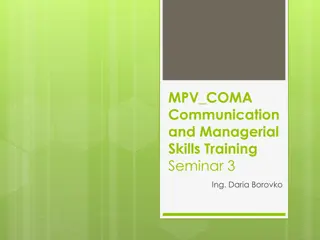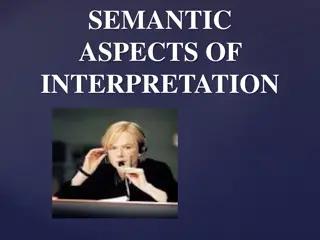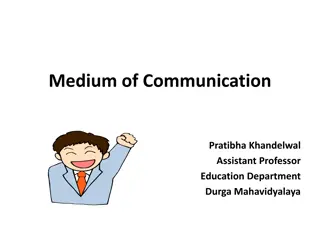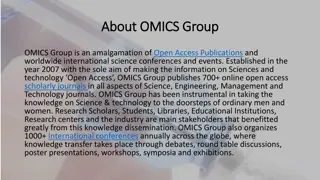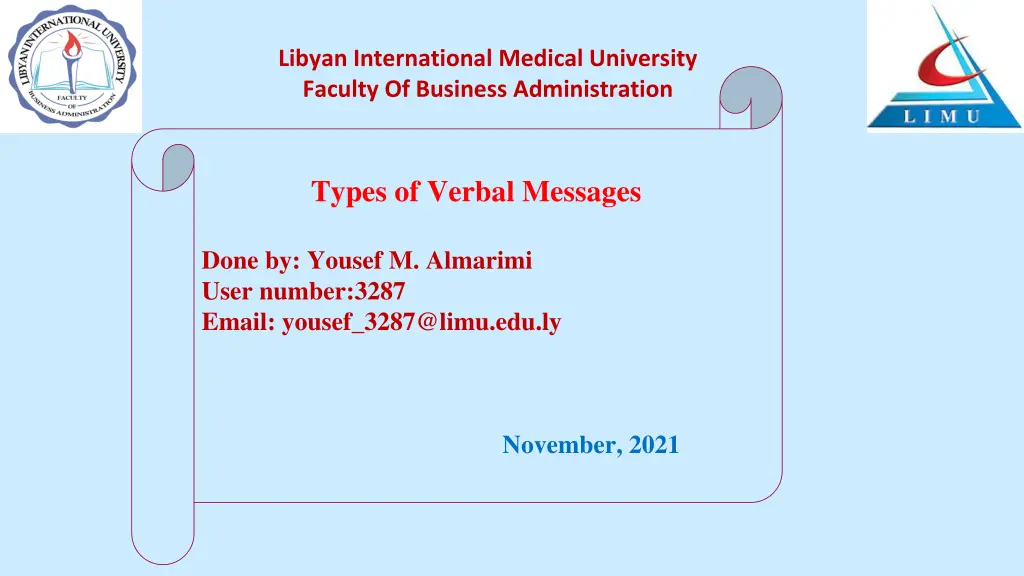
Effective Verbal Communication: Types of Messages and Best Practices
Enhance your verbal communication skills with an overview of different types of verbal messages, such as formal and informal, and learn the best ways to improve communication in various settings like face-to-face conversations, social gatherings, and business meetings. Follow tips on using clear enunciation, avoiding idioms and humor, and more for successful interpersonal interactions.
Download Presentation

Please find below an Image/Link to download the presentation.
The content on the website is provided AS IS for your information and personal use only. It may not be sold, licensed, or shared on other websites without obtaining consent from the author. If you encounter any issues during the download, it is possible that the publisher has removed the file from their server.
You are allowed to download the files provided on this website for personal or commercial use, subject to the condition that they are used lawfully. All files are the property of their respective owners.
The content on the website is provided AS IS for your information and personal use only. It may not be sold, licensed, or shared on other websites without obtaining consent from the author.
E N D
Presentation Transcript
Libyan International Medical University Faculty Of Business Administration Types of Verbal Messages Done by: Yousef M. Almarimi User number:3287 Email: yousef_3287@limu.edu.ly November, 2021
Content . Communication . Verbal Communication . Types of Verbal Messages . Best Ways to Improve Communication
Communication Definition of communication It is the process by which information is exchanged in writing, verbally, and/ or non-verbally through a common system of language, gestures, symbols, or signals. . In the business place, communication is considered effective when it results in a common understanding between communication partners and the communication's intended results are achieved. . The chances of realizing effective communication are improved when each communication partner attempts to understand the other.
Verbal Communication It is the communication that includes the exchange of information through spoken words, written messages, or sign language. . In the corporate world, effective verbal communication is an integral part of interpersonal interactions as well as business and professional conversation.
Types of Verbal Messages 1. Formal It is understood as official communication, and in this, a sender follows a pre-defined channel for sharing the information. 2. Informal It is also known as grapevine, and in this, senders don t use or follow any pre-defined channels for transmitting the information.
Best ways to improve communication A. general guidelines for face-to-face conversations, social gatherings, negotiations, telephone conversations, and business meetings. Use the most common words with their most common meanings. Use short words wherever possible. Speak at a slower-than-normal rate. This will helps others to keep up, and it helps you with clear enunciation. Pronounce words precisely and control your accent.. Do not mumble or slur words. Speak with clear breaks between words. Avoid idioms, slang, jargon, buzzwords, and cliches. Avoid sports expressions (e.g., out in left field and he struck out). Avoid metaphors (e.g., up the creek without a paddle)
Be literal. Avoid humor. Humor is personal. It translates poorly. Use two-word verbs sparingly (e.g., use continue instead of go on ). Pause frequently for emphasis and for a way to help your audience keep up with you. Use politically correct terms and phrases and avoid cursing. Avoid interrupting your communication partner when he or she is speaking. Show your communication partner that you are interested in his/her thoughts and ideas, by exhibiting excellent listening skills. Be patient with your communication partner.
B. Verbal communication guidelines for business presentations given to international audiences. Before beginning, tell your audience how long you will speak and your preferences regarding interruptions and questions. Before diving into your presentation, provide each audience member with a handout containing your basic outline for the presentation in your audience's native language. Then, go through it briefly. Meet your foreign audience's formality expectations (e.g., some prefer a conversational tone and some do not) Talk to your audience instead of reading from a written or memorized script. Make your points plainly, clearly, and one at a time. Use visual aids whenever possible. Use visual aids that are simple and clear in design and content. At the end, provide a detailed handout of your presentation in your audience's native language. Be sure to include your name and contact numbers, email address, etc., so audience members can contact you if they need clarification.
References . Google search, 2021. https://www.google.com/ https://www.abebooks.com/Communicating-Business-Robert-Insley-Kendall- Hunt/30734857277/bd

